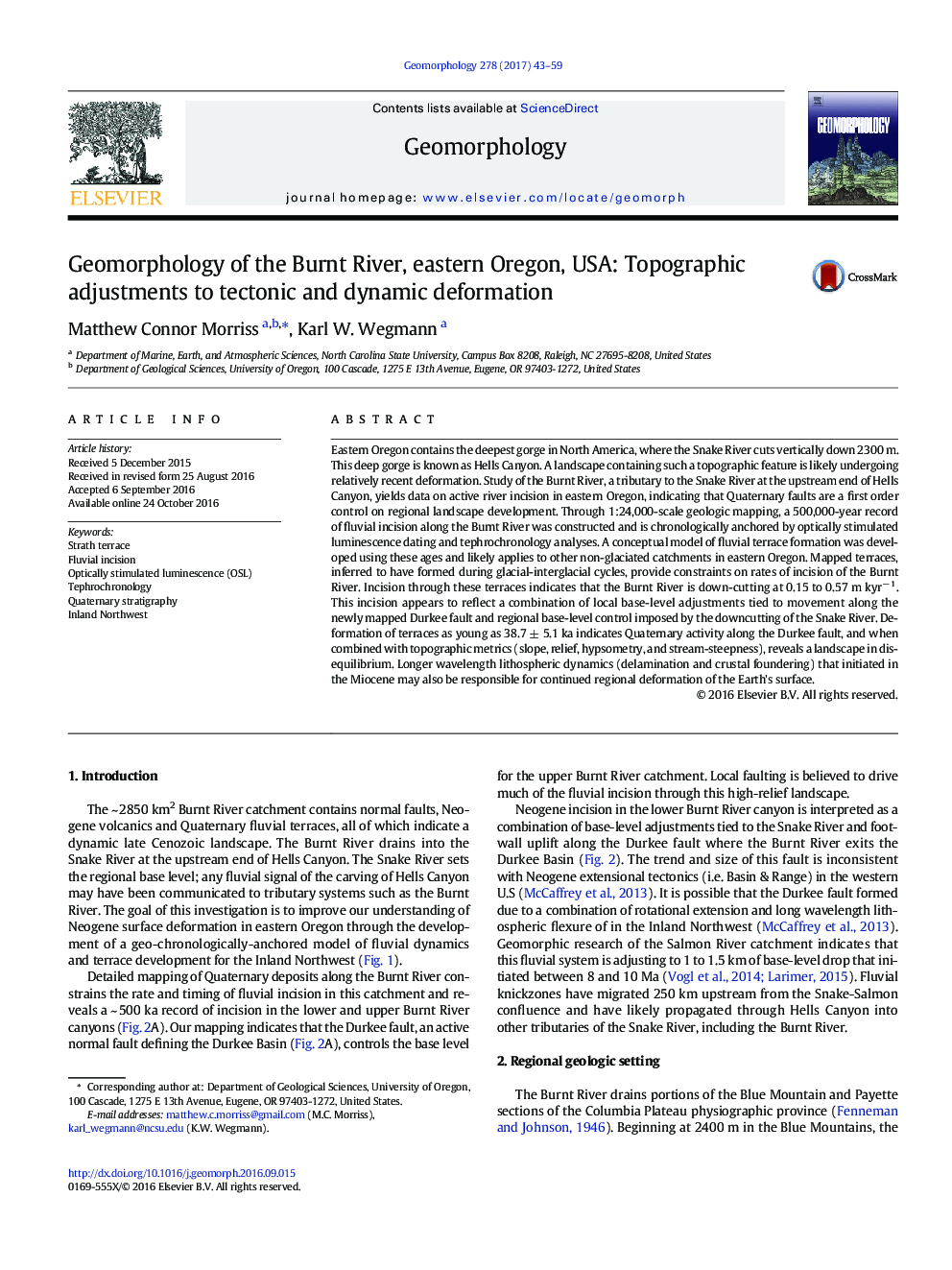| کد مقاله | کد نشریه | سال انتشار | مقاله انگلیسی | نسخه تمام متن |
|---|---|---|---|---|
| 4683822 | 1635371 | 2017 | 17 صفحه PDF | دانلود رایگان |
• 7 new Late-Quaternary terraces in NE Oregon were mapped.
• Strath terrace deposits were dated using tephrochronology and OSL dating.
• Landscape position of terraces indicate faulting at a rate of 2.5 ± 1.0 mm yr− 1.
• Incision rates ranged from 0.57 ± 0.2 to 0.21 ± 0.16 m ky− 1.
• Channel steepness appears largely controlled by faulting.
Eastern Oregon contains the deepest gorge in North America, where the Snake River cuts vertically down 2300 m. This deep gorge is known as Hells Canyon. A landscape containing such a topographic feature is likely undergoing relatively recent deformation. Study of the Burnt River, a tributary to the Snake River at the upstream end of Hells Canyon, yields data on active river incision in eastern Oregon, indicating that Quaternary faults are a first order control on regional landscape development. Through 1:24,000-scale geologic mapping, a 500,000-year record of fluvial incision along the Burnt River was constructed and is chronologically anchored by optically stimulated luminescence dating and tephrochronology analyses. A conceptual model of fluvial terrace formation was developed using these ages and likely applies to other non-glaciated catchments in eastern Oregon. Mapped terraces, inferred to have formed during glacial-interglacial cycles, provide constraints on rates of incision of the Burnt River. Incision through these terraces indicates that the Burnt River is down-cutting at 0.15 to 0.57 m kyr− 1. This incision appears to reflect a combination of local base-level adjustments tied to movement along the newly mapped Durkee fault and regional base-level control imposed by the downcutting of the Snake River. Deformation of terraces as young as 38.7 ± 5.1 ka indicates Quaternary activity along the Durkee fault, and when combined with topographic metrics (slope, relief, hypsometry, and stream-steepness), reveals a landscape in disequilibrium. Longer wavelength lithospheric dynamics (delamination and crustal foundering) that initiated in the Miocene may also be responsible for continued regional deformation of the Earth's surface.
Journal: Geomorphology - Volume 278, 1 February 2017, Pages 43–59
